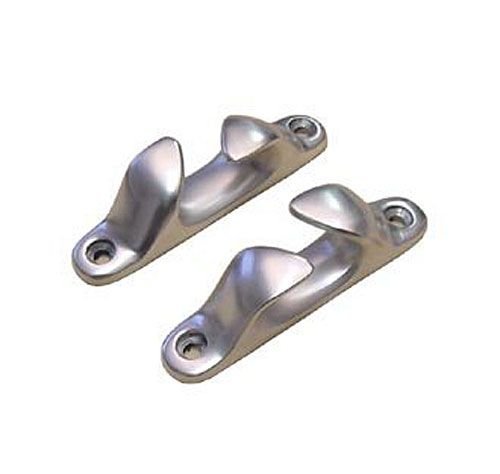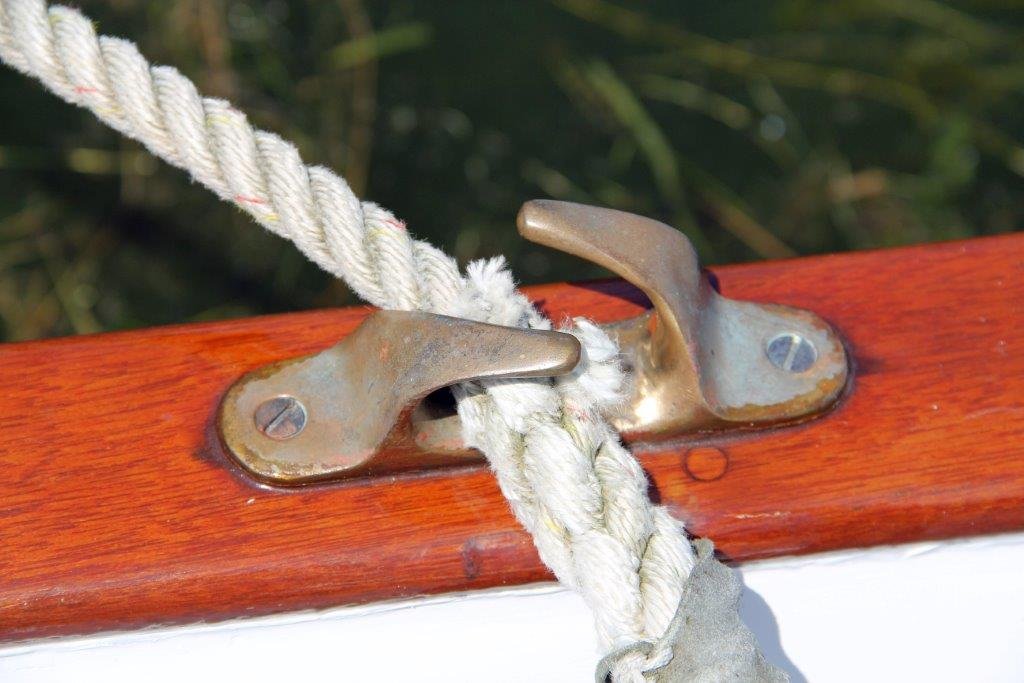-
Posts
3,029 -
Joined
-
Last visited
Content Type
Profiles
Forums
Gallery
Events
Everything posted by kurtvd19
-
Ryan: Right here on MSW we have the Triton Plans in the Work Group Projects that you can build a cross section model from or a full model - separated into two projects. Downloadable plans for the frames and keel pieces are accessible in the cross section area that will work for what you want to do. Access to the plans is only $5.00. You can see work others have done but the plans access section is only unlocked to you after paying the small fee. Once you have paid the fee this area is open to you so you can download all or part of the plans as needed - perpetual access. Kurt
-

Airbrush question
kurtvd19 replied to Antonio Vasquez's topic in Painting, finishing and weathering products and techniques
Over-spray is minimal. I use acrylics and the over-spray is dry before it falls onto the table top. A bit of newspaper catches it easily. Another advantage of acrylics is little to no odor. Solvent based paints are a different story and a spray booth like Hornet suggested is appropriate. Just be sure it's a properly designed unit with the fan being rated for use in a combustible environment. Kurt -
Roger: Thanks for pointing the article out for Ken. That's why I keep the annual index from the first SNL each year. I put each index into a 3 ring binder as well as on the HD of my desktop. Yet, I sometimes do just as you said - search the covers of the collection. Interesting thing about the restoration job. Only shortly after the boat was finished and delivered to the museum here in IL they somehow severely damaged the hull structurally when moving it on or off the trailer for it's first major showing and it's no longer on exhibit. the last I heard. It's about 10 miles from my place and have never been able to go see it - planned to give it a look but they took it out of public view before I got the chance. Kurt
-
The Panama Fairlead is not the fitting needed - wish it was. It's almost square when viewed from the side and the part I need is very low profile from the side - full size they are only 5 1/2" long by about 1 1/2" to 2" high. Two full sized Panama Fairlead's would sink the 26' sloop I am modeling. I will be making up a master, then a mold and then cast, polish and plate the parts for the model. Thanks to all who have commented and provided help.
-
Thanks Jim. I think the panama fairlead that AOS has is for a Panama Canal rated ship - it has a almost square profile while this chock is much lower profile. I have thought that I will have to cut and modify a closed chock and make a mold to cast copies. I have an inquiry in with the boats owner who's commissioned the model - I sketched and measured the fitting but I can't read my writing (unusual as I normally have very good lettering - but went cursive standing on a ladder in the boat shed). Thanks.
-
I need to identify this fitting from a 26 ft sloop. It's some sort of chock or fairlead. The next question is does anybody make one of these fittings so I don't have to scratch a master and cast them? Need some about 3/8" to 1/2" long. I checked Bluejacket and Model Expo and some model yacht suppliers. No go. Any help would be appreciated - even if they were made by a defunct mfg as I inherited a load of old fittings from AJ Fisher, Baucher (sp), etc. - drawers full...if they made some I will search through the stuff I have. Thanks, Kurt
-
The first build log - tune in tomorrow? Kurt
- 47 replies
-
- queen anne barge
- Syren Ship Model Company
-
(and 1 more)
Tagged with:
-
Pat: Wood glue will not work for attaching metal to wood. Either use C/A or epoxy. Kurt
- 449 replies
-
- sultana
- model shipways
-
(and 2 more)
Tagged with:
-
I didn't give him a lot the first time. Will make sure he's got enough this time. I only had a small container at the time and his ride was waiting. Kurt
- 228 replies
-
- gunboat
- model shipways
-
(and 1 more)
Tagged with:
-
Elijah: I can give you some more stain at the next meeting or if you can stop by. Kurt
- 228 replies
-
- gunboat
- model shipways
-
(and 1 more)
Tagged with:
-
Deno: Had a childhood friend named Dennis - called him Deno. Go to the main page here at MSW and click on the KIT BUILDS. In the upper right of the page is the word search with a magnifying glass symbol to it's right. Type in the Enterprise 1799 there and click onthe magnifying glass image. There will be various Enterprise build logs there to scroll through. Kurt
-
Welcome Deno. It would be great to know your real name - you can add it in your profile. Go to the Kit Builds section and do a search for "Enterprise 1799" and you will see several build logs by members who have built this same kit. Look at their builds and start one of your own and show your progress or ask for guidance if you have difficulty. Kurt
-

Gluing Planks When Wet
kurtvd19 replied to mikiek's topic in Building, Framing, Planking and plating a ships hull and deck
The drying can be sped up with a hair dryer and I have done this many times w/o noticing any shrinkage. You have to be careful to not heat the wood excessively - that's why I use a hair dryer instead of a heat gun (have both - hair dryer's heat is adequate). As to shrinkage - I don't soak planks any longer than a minute and most times I allow them to dry clamped in place w/o any heat and have not experienced any shrinkage. If the plank doesn't get soaked enough to expand any appreciable amount and the plank is dried w/o heat the wood structure returns to normal equilibrium and the same size you started from. Allowing the plank to air dry assures that it returns to normal equilibrium with the shop's atmosphere thus no shrinkage. I would not glue planks when wet as any shrinkage as they dry has to set up stress on the frames/bulkheads - is that adequate to break the glue joint? Maybe. What's the rush? Kurt -

Gluing Planks When Wet
kurtvd19 replied to mikiek's topic in Building, Framing, Planking and plating a ships hull and deck
There is no need for nails or other means of securing the planks if the wet plank is clamped in place as close as possible to the final curvature and allowed to dry. When dry any area of the plank needing an additional bend can be wet again locally and re-clamped in place to accommodate the additional curve. When dry if there are any slight gaps they can be closed with slight pressure when glue is applied and the plank clamped into the final position. Very little pressure is required as clamping is only needed for the glue to set. The gaps can be closed with slight edge pressure. One question that was asked was about clamping issues affecting the wood. Soft woods like basswood can be compressed by clamps - spread the force out with a wood block between the clamp and the wood. If a dent is made in the wood by a clamp it's able to be eliminated many times by wetting the wood at the dent and applying some heat to the area. As the heat can also loosen and reactivte the glue be sure to lightly clamp the plank on adjacent frames/bulkheads until the glue resets. Kurt -
As long as you apply the heat gently and don't overheat the wood to the point where the lignin boils, everything should cool off OK and the strength will not be affected. As others have cautioned - Be Careful. These things can start fires - I saw many fires started using these things for removing paint by pros and homeowners before I retired from the FD. Kurt
-
As long as you make sure there isn't a burr on the cut end it should work perfectly. I had the opposite problem with another brand of micro chuck - the shaft was too short to go into my dental drill hand piece so I ah do de-solder the one that came in the chuck and replace it with one a bit longer - no problem as it is a std size. Kurt
-

Air Brush Paints
kurtvd19 replied to Worldway's topic in Painting, finishing and weathering products and techniques
I don't brush paint except on very rare occasions and didn't try them with a brush, but I would not personally use them with a brush due to the rather coarse pigment that in my opinion would produce a rather coarse and heavy coat of paint. Thinning doesn't affect the pigment size of the paint so the coverage would look coarse (in my opinion). I did dab some onto some scrap wood in the shop and decided they were not worth spending time on. The old Floquil (solvent based) and the current Badger Modelflex Acrylic paints have a pigment that is very finely ground to about 1 micron. Other hobby paints are probably close but I have personal knowledge of the Floquil and Badger paints. Typical house paint has a pigment size of 17-19 microns - they all advertise "covers in one coat!". I find the MS paint unacceptable but that doesn't mean that other won't say they are the best thing since sliced bread. Kurt -

Air Brush Paints
kurtvd19 replied to Worldway's topic in Painting, finishing and weathering products and techniques
Derek: Stick with the airbrush paints. Hobby paints have a much finer pigment size than other paints. They are designed to not hide detail under a thick coat of heavy (large pigment) paint. The larger/coarser pigment paints hide detail. I do not recommend the MS paints - the pigment size is not comparable at all to an airbrushing paint. I had some donated to our club and I could not in good conscious pass it on to anybody who was contemplating airbrushing - it looked to me to be the same consistency as house paint. On the off chance that the stuff I examined was atypical when some time later a couple of jars were offered at another club's meeting I took a jar to check it out and my opinion did not change. I have over a dozen air brushes with small to large needles/tips and I wouldn't even try to use any of this stuff through any of my brushes. In fairness to Model Expo this is the only Model Shipway's labeled product I don't fully recommend. Do a search here on airbrushing - there are some very detailed posts by experienced users on using the right paints. Kurt -
Welcome to MSW Steve. Gerald Wingrove, a true master in metal is building a metal hull and I am sure his build will be of interest to you. His work is exceptional and highly detailed. A bit different than I think you are considering, but your time will not be wasted in checking his work out. Again, welcome to MSW. Kurt
About us
Modelshipworld - Advancing Ship Modeling through Research
SSL Secured
Your security is important for us so this Website is SSL-Secured
NRG Mailing Address
Nautical Research Guild
237 South Lincoln Street
Westmont IL, 60559-1917
Model Ship World ® and the MSW logo are Registered Trademarks, and belong to the Nautical Research Guild (United States Patent and Trademark Office: No. 6,929,264 & No. 6,929,274, registered Dec. 20, 2022)
Helpful Links
About the NRG
If you enjoy building ship models that are historically accurate as well as beautiful, then The Nautical Research Guild (NRG) is just right for you.
The Guild is a non-profit educational organization whose mission is to “Advance Ship Modeling Through Research”. We provide support to our members in their efforts to raise the quality of their model ships.
The Nautical Research Guild has published our world-renowned quarterly magazine, The Nautical Research Journal, since 1955. The pages of the Journal are full of articles by accomplished ship modelers who show you how they create those exquisite details on their models, and by maritime historians who show you the correct details to build. The Journal is available in both print and digital editions. Go to the NRG web site (www.thenrg.org) to download a complimentary digital copy of the Journal. The NRG also publishes plan sets, books and compilations of back issues of the Journal and the former Ships in Scale and Model Ship Builder magazines.




